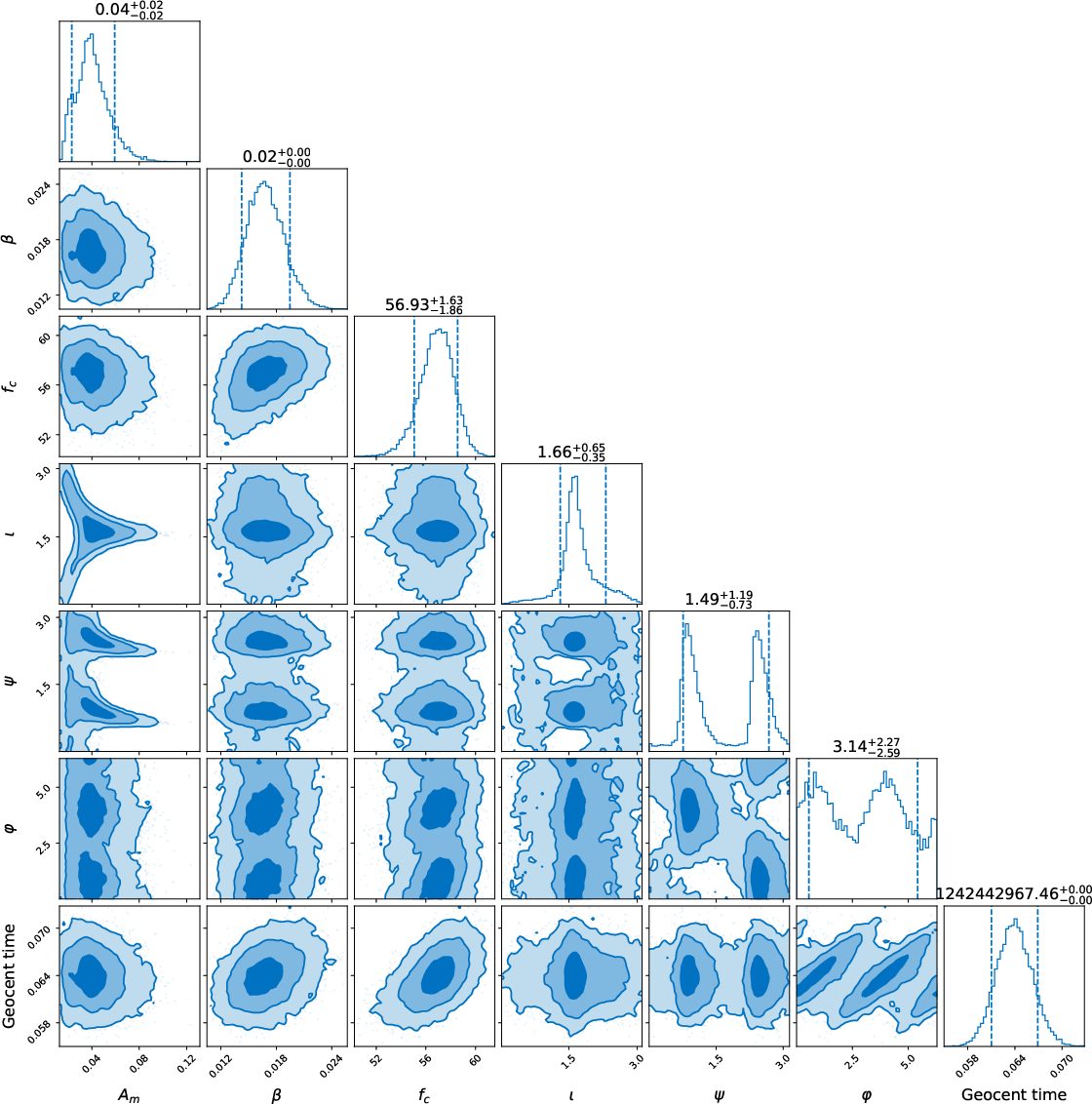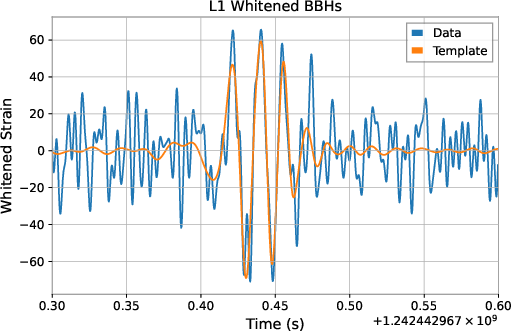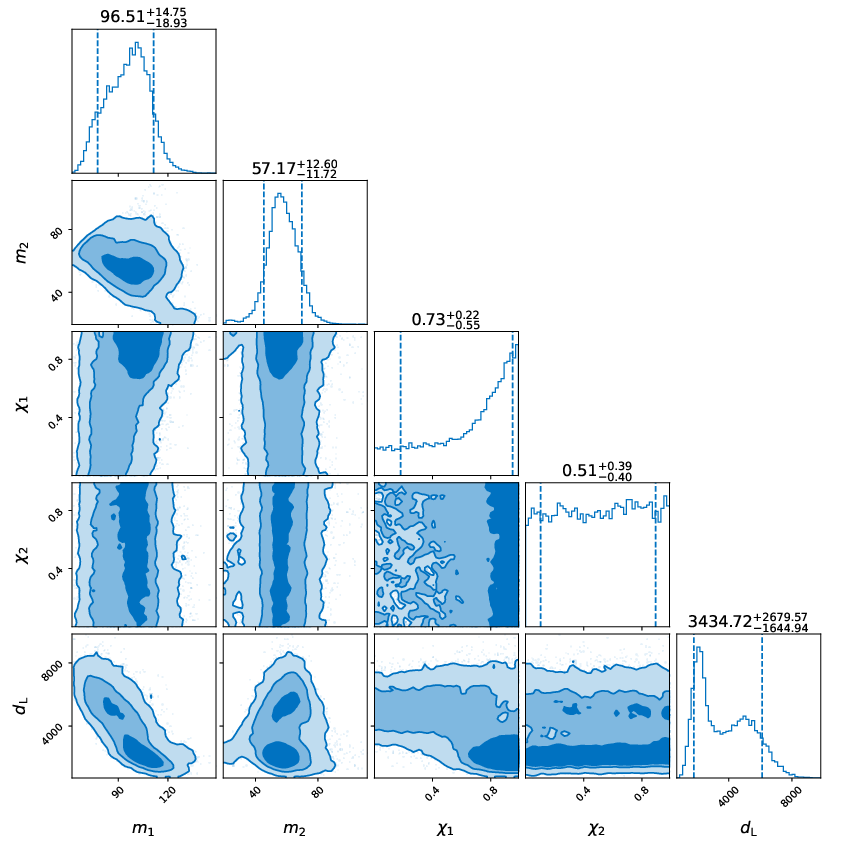- The paper introduces a wormhole echo model as an alternative explanation for GW190521, challenging the standard binary black hole interpretation.
- It employs Bayesian inference to estimate key echo parameters, revealing a central frequency of ~57 Hz and an SNR comparable to BBH models.
- The study underscores the need for enhanced detector sensitivity to distinguish gravitational wave echoes from exotic compact objects.
Gravitational Wave Echoes from Wormhole Remnants: An Alternative Interpretation of GW190521
Introduction
The GW190521 event, detected by the LIGO-Virgo collaboration, is notable for its short duration and the absence of a clear inspiral phase, which challenges the canonical binary black hole (BBH) coalescence paradigm. The standard interpretation attributes GW190521 to the merger of two high-mass black holes, but this scenario is in tension with established models of stellar evolution. The paper proposes an alternative hypothesis: GW190521 may be a gravitational wave (GW) echo pulse originating from a wormhole remnant formed by BBH merger in another universe, with the wormhole throat connecting to our universe. This model is motivated by the search for macroscopic signatures of quantum gravity and the black hole information paradox, where horizonless exotic compact objects such as wormholes are considered viable candidates.
Echo-for-Wormhole Model
The model is constructed using a Schwarzschild-like Morris-Thorne wormhole, where the Schwarzschild metrics of two universes are joined at the wormhole throat (r0>rS). The GW signal propagation is modeled as a one-dimensional scattering problem with mirror barriers representing photon spheres on both sides of the throat. The ringdown signal generated by BBH merger in the other universe can enter the wormhole, reflect between the barriers, and tunnel through the right-side barrier into our universe, producing a series of echoes. The first echo pulse is hypothesized to be GW190521.


Figure 1: Schematic of the echo interpretation of GW190521, illustrating the formation of a wormhole and the propagation of GW echoes between mirror barriers.
The time-domain waveform of the first echo is modeled as a sine-Gaussian packet:
h(t)=Acos(2πfc(t−tc)+φ)exp(−2β2(t−tc)2)
where fc is the central frequency, β is the width, φ is the phase, and A is the amplitude. The amplitude normalization is set relative to a reference strain at 1 Mpc to facilitate parameter estimation and comparison with standard BBH models.
Bayesian Inference and Parameter Estimation
Parameter estimation is performed using Bayesian inference, fixing the sky location to the best-fit values from the electromagnetic counterpart candidate ZTF19abanrhr to break degeneracies. The posterior distributions for the echo-for-wormhole model parameters indicate a central frequency fc≈57 Hz and a narrow width β≈0.02, consistent with the expected frequency-domain features of a wormhole echo.

Figure 2: Posterior distribution of parameters for the echo-for-wormhole model, showing constraints on frequency, width, and amplitude.
Maximum-likelihood waveform reconstructions for the LIGO Livingston (L1) detector demonstrate that the echo-for-wormhole model can fit the observed GW190521 data comparably to the standard BBH model (IMRPhenomXPHM waveform), especially given the short duration and lack of inspiral phase.


Figure 3: Time-domain waveform reconstructions for L1 detector; left: echo-for-wormhole model, right: BBH model.
Model Comparison and Signal-to-Noise Analysis
The Bayesian model comparison is performed using the log Bayes factor between the echo-for-wormhole and BBH hypotheses. The network signal-to-noise ratio (SNR) for the echo-for-wormhole model is 14.45, closely matching the BBH model's SNR of 15.59, indicating both models are well above the noise threshold and are statistically significant detections.
The log Bayes factor slightly favors the BBH hypothesis (lnBBBHEcho≃−2.9), but this is not sufficient to decisively rule out the echo-for-wormhole model. The posterior distributions for the BBH model parameters are consistent with previous LIGO-Virgo results, supporting the robustness of the analysis.

Figure 4: Posterior distribution of intrinsic parameters and luminosity distance for the standard BBH event, consistent with LIGO-Virgo results.
Physical and Theoretical Implications
The echo-for-wormhole model provides a plausible alternative explanation for GW190521, especially given the event's atypical features. The model assumes that only the first echo pulse is detectable, either due to rapid collapse of the wormhole into a black hole or the subsequent echoes falling below detector sensitivity. The requirement of negative energy matter near the wormhole throat is a significant theoretical challenge, but may be related to cosmological observations involving exotic energy components.
The Bayesian analysis does not decisively favor the BBH model over the echo-for-wormhole hypothesis, suggesting that future improvements in echo waveform modeling and detector sensitivity could enhance the discriminative power of such tests. The detection of similar short-duration GW events (e.g., GW231123) further motivates systematic model comparison across a range of exotic compact object scenarios.
Future Directions
The identification and characterization of GW echoes from wormhole remnants would have profound implications for quantum gravity, the nature of compact objects, and the possibility of multiverse connections. Future work should focus on:
- Developing more physically detailed echo waveform templates, including time-varying throat dynamics and realistic energy transfer mechanisms.
- Enhancing detector sensitivity and data analysis pipelines to improve echo detection thresholds.
- Systematic Bayesian model selection across a broader catalog of short-duration GW events.
- Investigating the astrophysical plausibility and cosmological consequences of traversable wormholes and their formation channels.
Conclusion
The paper presents a rigorous Bayesian analysis of GW190521 under the echo-for-wormhole hypothesis, demonstrating that the model yields a network SNR comparable to the standard BBH interpretation. While the BBH model remains slightly favored, the echo-for-wormhole scenario is not excluded and represents a viable alternative for explaining short-duration GW events lacking inspiral phases. The results highlight the need for continued theoretical and observational efforts to probe the nature of exotic compact objects and the fundamental structure of spacetime.





